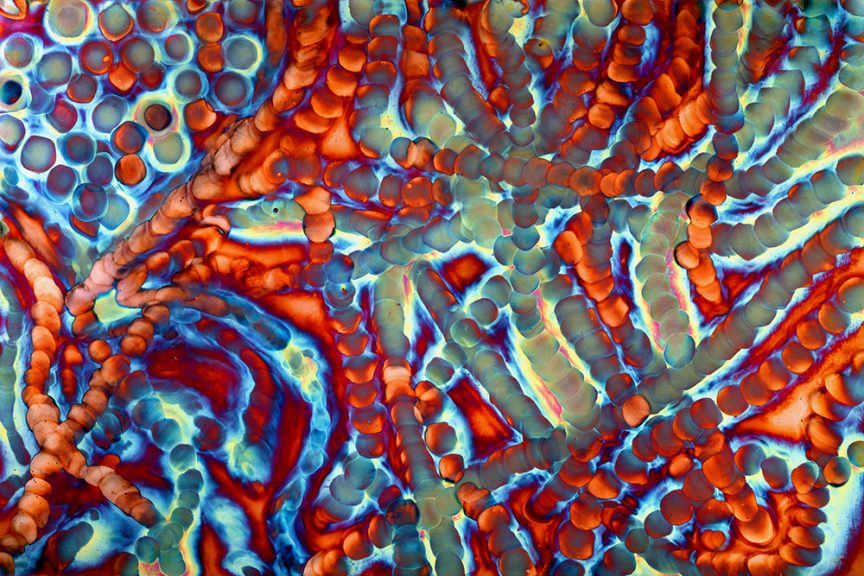Name: Cheryl Safren
Which came first in your life, the science or the art?
Art. I attended the High School of Art and Design and then Pratt Institute for my undergraduate degree. My interest in science actually began with engineering. One third of the United States’ machine tool industry was located within a 25-mile radius of my home when I lived in Michigan and that was when I began painting isolated still lifes of man-made machines. These works are concerned with the design and pattern of engineered forms, and the compositional merit inherent in the elements of their structure. Ten years later when I moved back to New York, I found much of the industry had left and so I too left behind the heavy industrial base that provided inspiration for this work.

Capillary 3
My work became very organic and textural. While industrial patterns still fascinated me, I began to explore the patterns that appeared in nature. The order found in these patterns, contrasted with the random and unfinished state of all organisms, provides a dynamic equilibrium. I began researching simple organisms, and by 1990, I was exploring cell biology in humans and was featured in a one-person show at the American Association for the Advancement of Science, in Washington, DC. That show, entitled “Interior Landscapes,” contained some of the fifty-four works produced with this theme.
In 2001, while working on a science project with my son, I began experimenting with chemistry as a means of creating art. This is still my process today.

Nasal Cilia
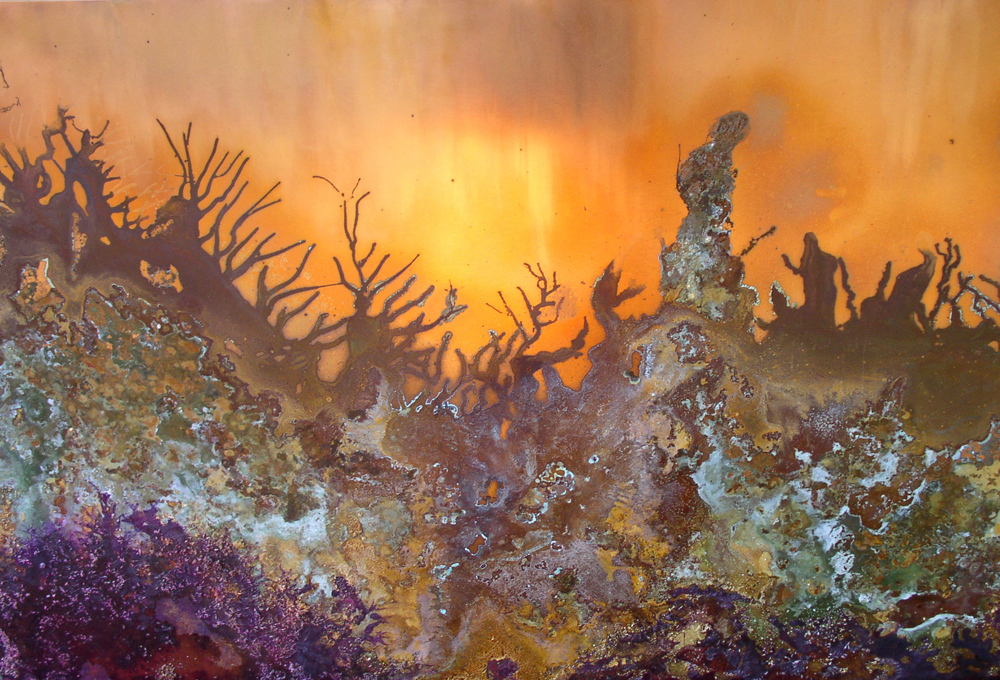
Coral Reef
Which sciences relate to your art practice?
While biology, the environment, geology, and astronomy have influenced the subject of these works, it is the physics of light and the chemical interactions that give full expression to these images. Many hours of research and experimentation have enabled me to control and manipulate chemicals in order to create these images. Some of the chemical processes produce a coarse and grainy texture, while others produce shiny or gossamer textures. Shifting light on the copper surface and viewer movement are the kinesthetic forces altering perception in these artworks. When the light dims or strikes at oblique angles, the color becomes saturated.

Astrocytes
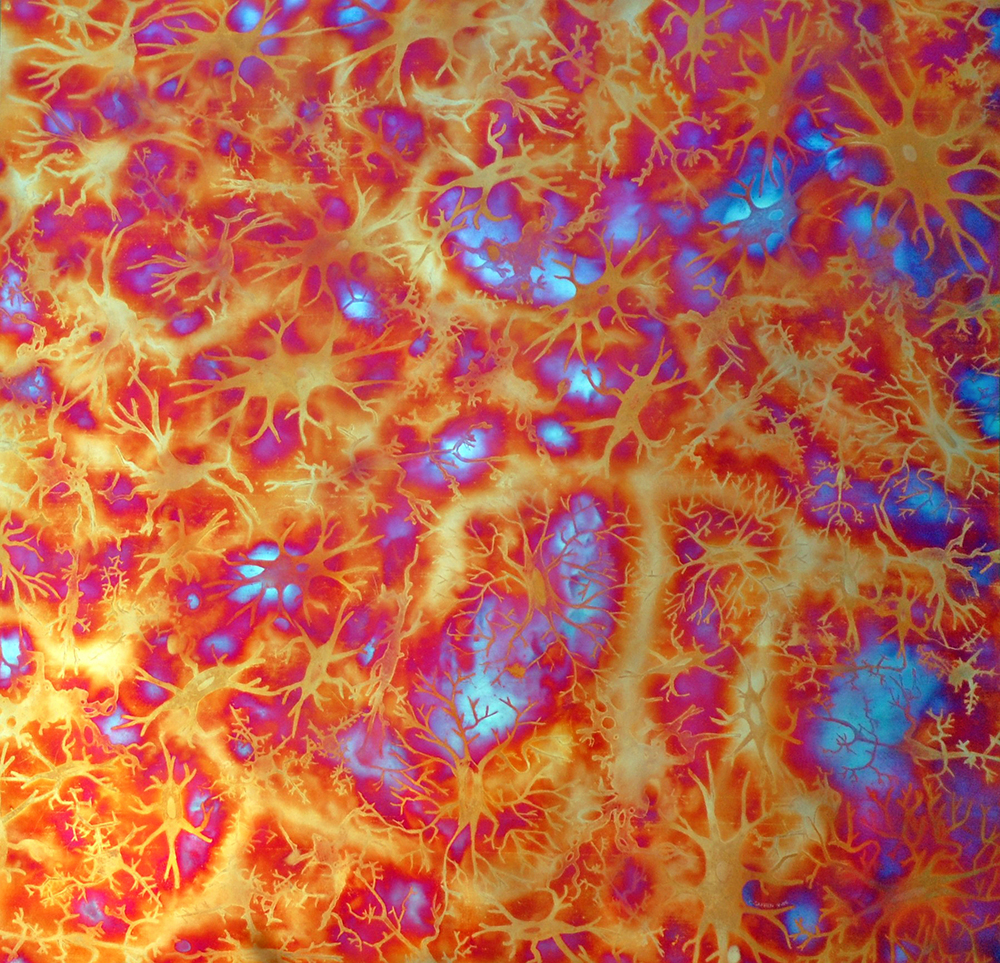
Microglia
What materials do you use to create your artworks?
My process is rooted in experimentation. I use metal, mostly copper, and chemicals. This is not an etching process, which becomes obvious when you see the actual work.

Interior Transport
Artwork/Exhibition you are most proud of:
I participated in an exhibition “Responding to Climate Change” held in Daejeon, Korea that ran from January – June 2017. This exhibit dealt generally with the effects of increased carbon dioxide levels. My work specifically addressed how some plant species benefit more fully or rapidly from excess carbon dioxide, which introduces the possibility of overabundance in some species and increases their potential effects on ecosystems. The international group of eight artists involved in this exhibition had the opportunity to collaborate with scientists from the Korean Research Institute of Chemical Technology.
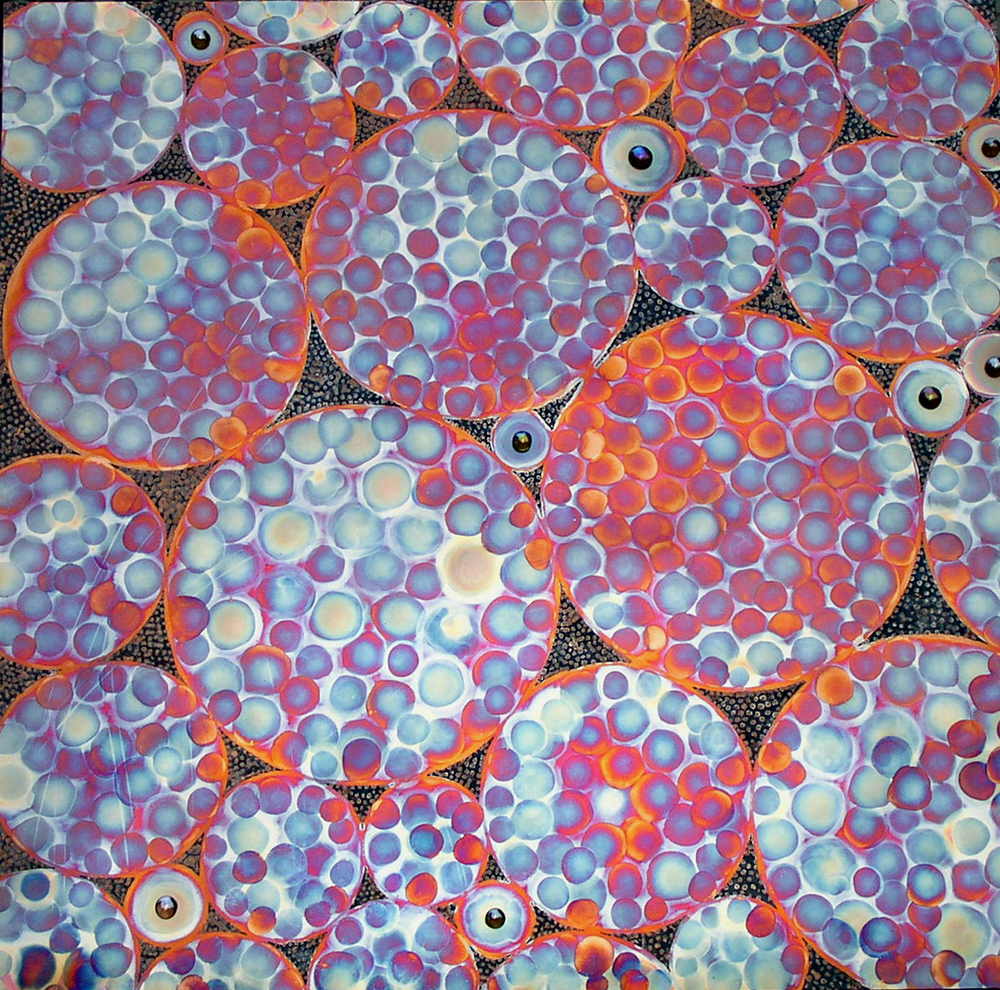
Round ‘n Round (Responding to Climate Change Exhibition)

Und ‘n Undone (Responding to Climate Change Exhibition)
Which scientists and/or artists inspire and/or have influenced you?
The Fulcrum Gallery has greatly influenced me, however, many people have inspired me. Some of the many artists who have left me awestruck are: Claude Monet, Gerard Murphy, Tom Wesselmann, Louise Nevelson, Louise Bourgeois, Frank Stella, Max Ernst, Hector Leonardi, Marlene Tseng Yu, Ursula von Rydingsvard, Hoss Haley, and Yunchul Kim. I am also inspired by neuroscientists, like Dr. Nathaniel Safren, and chemical engineers, such as the late Dave Cooper who instructed me on the safe use of chemicals while creating my artwork.

L17
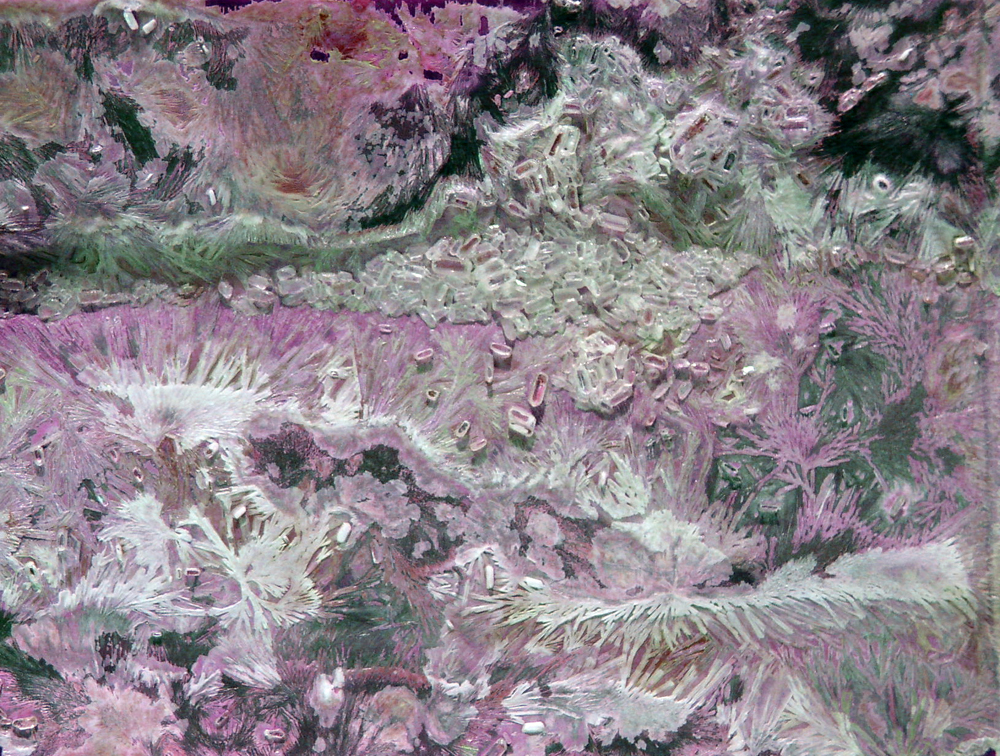
Violet Crystals
Is there anything else you want to tell us?
An article about my work is forthcoming in National Geographic Science.
Share this Post

